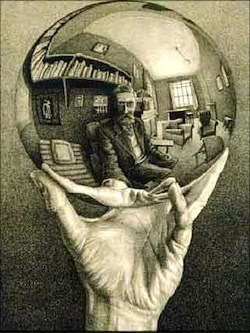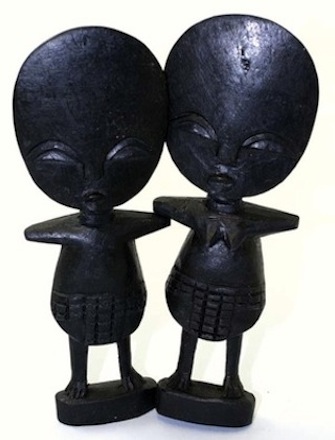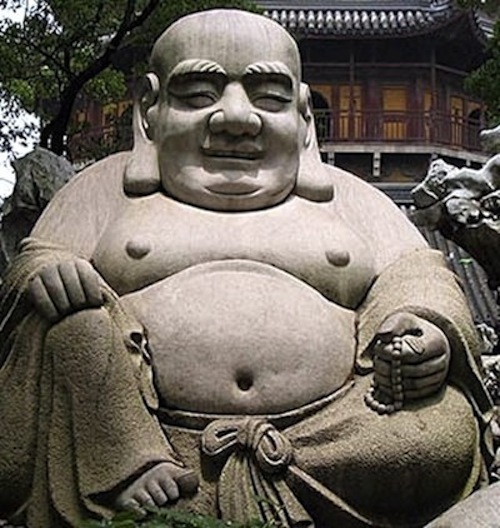
“Idol” comes from the Greek word eidolon meaning “appearance, reflection in water or in a mirror.” An idol is simply the reflection in stone, wood or metal of the person who hand-made that idol. The Bible consistently condemns the making or worshipping of idols starting with the second of the Ten Commandments (c.1500 BC): “You shall not make for yourself an image in the form of anything in heaven above or on the earth beneath or in the waters below. You shall not bow down to them or worship them.” Exodus 20:4,5
David, the Psalmist, wrote in c. 1000 BC:
“Our God is in heaven….But their (pagan) idols are silver and gold, made by the hands of men. They have mouths, but cannot speak, eyes, but cannot see; they have ears, but cannot hear, noses, but they cannot smell; they have hands, but cannot feel, feet, but they cannot walk; nor can they utter a sound with their throats. Those who make them will be like them, and so will all who trust in them.” Psalm 115:3-8
No matter how skillfully wrought or lovingly molded by craftsmen in the ancient world or in our modern world, an idol is still an idol. An idol is the projection of the person/culture who fashioned the idol.

- Gautama Buddha (c. 563 BC or c. 480 BC) symbolizing the development of the Yin part of the body as personified by a big belly.
- Hindu Lord Ganesha, the god of power to remove obstacles and wisdom. Ganesha is one of 33 gods that were incrementally extended to be 33,000,000 demigods.
The Jews were the only people in the ancient pre-Christian world who did not worship idols. They knew, as the Christians knew, there was only one God and the one God was not capable of being embodied in earthly metal, wood, stone or in any tangible human way.
“And the rest of the men which were not killed by these plagues yet repented not of the works of their hands, that they should not worship devils, and idols of gold and silver and brass and stone and of wood: which neither can see nor hear nor walk.” Revelation 9:20
From Isaiah 44:9-21 (700’s BC) we learn that in addition to craftsmen making idols, ordinary blacksmiths and carpenters, using cypress, oak and cedar, often fashioned the idols people worshipped. We learn from this passage exactly how an idol was made in the ancient world and how craftsmen make idols in our modern world:

“All who make idols are nothing, and the things they treasure are worthless…The blacksmith takes a tool and works with it in coals; he shapes an idol with hammers, he forges it with the might of his arm…The carpenter measures with a line and makes an outline with a marker; He roughs it out with chisels and marks it with compasses. He shapes it in the form of man, of man in all his glory, that it may dwell in a shrine. He cut down cedars, or perhaps took a cypress or oak….It is man’s fuel for burning; some of it he takes and warms himself, he kindles a fire and bakes bread. But he also fashions a god and worships it; he makes an idol and bows down to it. Half of the wood he burns in the fire; over it he prepares his meal, he roasts his meat and eats his fill. He also warms himself….From the rest he makes a god, his idol; he bows down to it and worships. He prays to it and says, ‘Save me; you are my god.’ They know nothing, they understand nothing….No one stops to think no one has the knowledge or understanding to say, Half of it I used for fuel, I even baked bread over its coals, I roasted meat and ate it. Shall I make a detestable thing from what is left? Shall I bow down to a block of wood?’…He cannot save himself or say, ‘Is not this thing in my right hand a lie?’…Remember these things, O Jacob, for you are my servant, O Israel, I have made you.”
Isaiah reminds that God created people. People did not create God. The pagan gods and goddesses, their attributes, their histories and antics, all the myths and stories about them in ancient and modern times were incrementally conjured up from the imaginations and fantasies of the people who projected on to them their adulterated needs, aspirations and fears.


Fashioning and then worshipping metal, stone and wooden gods and trying desperately, unthinkingly to imbue feelings and sensory organs into the metal, stone and wood, pagans had/will become like the statues they created. Christians were targeted and martyred by the Roman State because they pointed out the futility, folly and falsity of paganism with its mute, blind, deaf pieces of wood, stone and metal. “We become what we behold,” (William Blake, Jerusalem)—Article by Sandra Sweeny Silver


